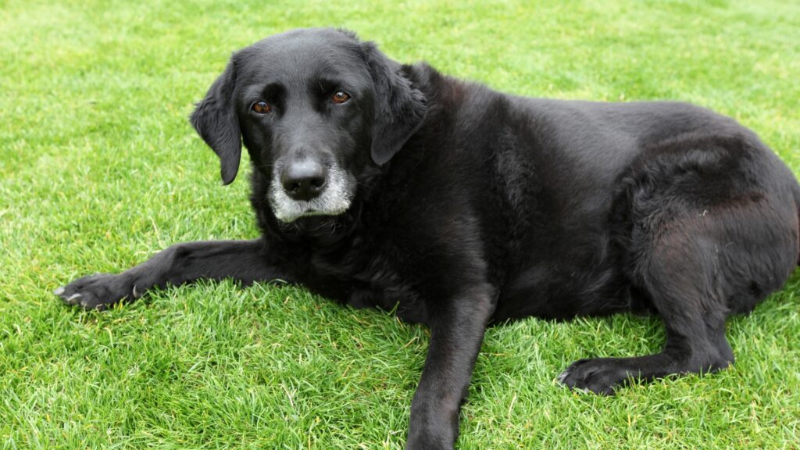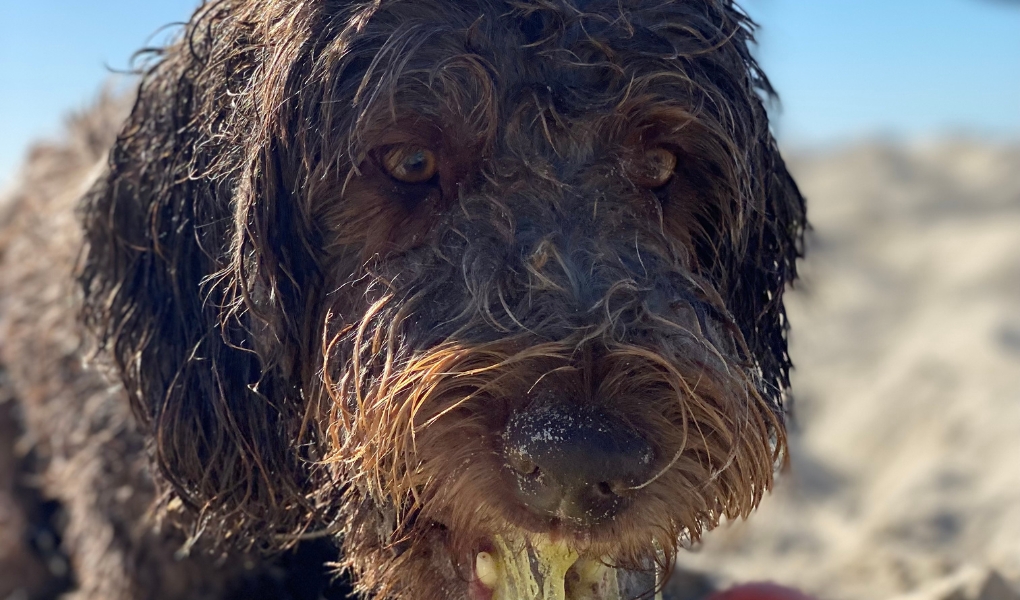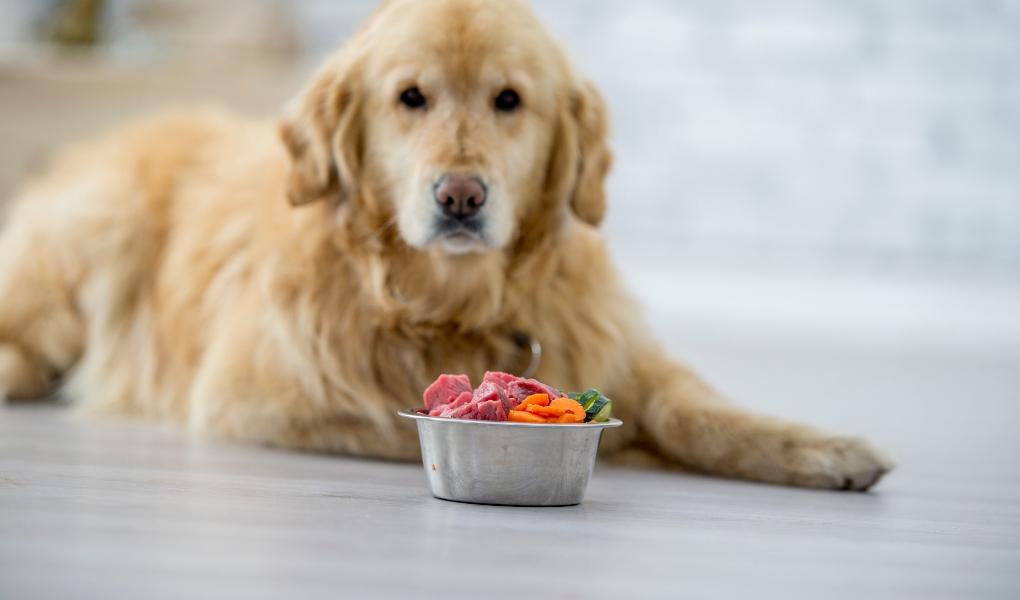Table of Contents
ToggleA Comprehensive Guide to: How Much Raw Food to Feed Dog
Feeding your dog a raw diet has gained popularity among pet owners who wish to provide a more natural and biologically appropriate diet for their pets. However, determining the right amount of raw food to feed your dog can be challenging. This guide will help you understand how much raw food to feed dog, ensuring that your pet gets the proper nutrition without overeating or underfeeding.
Understanding the Raw Diet for Dogs
A raw diet, often referred to as BARF (Biologically Appropriate Raw Food or Bones and Raw Food), typically includes raw meat, bones, organs, fruits, and vegetables. Proponents of raw feeding argue that this diet closely resembles what dogs’ ancestors would have eaten in the wild, providing them with more natural nutrition.
Factors to Consider When Determining How Much Raw Food to Feed Dog
Several factors influence how much raw food you should feed your dog, including their weight, age, activity level, and overall health. Here’s a breakdown of the key factors to consider:
Dog's Weight
The general rule of thumb for feeding raw food is to give your dog between 2% and 3% of their ideal adult body weight per day.
- Smaller Dogs: Small breeds may require closer to 3% of their body weight due to their higher metabolism.
- Larger Dogs: Larger breeds, with slower metabolisms, may need closer to 2% of their body weight.
Activity Level
Active dogs that participate in regular exercise, such as running, agility training, or working dogs, may require a higher percentage of raw food to meet their energy needs.
- Highly Active Dogs: May require up to 3.5% of their body weight in raw food daily.
- Moderately Active Dogs: Typically need about 2.5% of their body weight.
- Less Active or Older Dogs: May need closer to 2% to avoid weight gain.
Life Stage
A dog’s age significantly impacts how much raw food to feed dog. Puppies, adults, and seniors have different nutritional requirements.
- Puppies: Puppies require more food relative to their body weight to support their rapid growth. Generally, puppies should eat around 5-6% of their current body weight, divided into three to four meals per day.
- Adults: Adult dogs should be fed 2-3% of their ideal body weight, divided into two meals per day.
- Seniors: Senior dogs may require adjustments based on their activity level and health, but the standard 2-3% rule generally applies.
Health and Medical Conditions
If your dog has any health conditions, such as obesity, allergies, or digestive issues, this may influence how much raw food to feed dog. Consulting with a veterinarian is crucial for tailoring the diet to your dog’s specific health needs.
Calculating How Much Raw Food to Feed Dog
To determine how much raw food to feed your dog, use the following steps:
Determine Your Dog's Ideal Body Weight:
- Use breed standards or consult your veterinarian to determine your dog's ideal adult weight.
Choose the Percentage:
- Based on your dog's activity level, life stage, and health, decide whether to feed 2%, 2.5%, or 3% of their body weight.
Calculate the Daily Amount:
- Multiply your dog's ideal body weight by the chosen percentage. For example, if your dog weighs 50 pounds and you're feeding them 2.5%, the calculation would be
- 50 lbs x 0.025 = 1.25 lbs of raw food per day.
Divide the Meals:
- Depending on your dog's age and activity level, divide this daily amount into two or more meals.
Sample Feeding Chart: How Much Raw Food to Feed Dog
Below is a sample feeding chart to illustrate how much raw food to feed dog based on their weight and activity level:
- Dog's Weight (lbs)2% of Body Weight2.5% of Body Weight3% of Body Weight
- 10 0.2 lbs (3.2 oz) 0.25 lbs (4 oz) 0.3 lbs (4.8 oz)
- 20 0.4 lbs (6.4 oz) 0.5 lbs (8 oz) 0.6 lbs (9.6 oz)
- 30 0.6 lbs (9.6 oz) 0.75 lbs (12 oz) 0.9 lbs (14.4 oz)
- 40 0.8 lbs (12.8 oz) 1 lb (16 oz) 1.2 lbs (19.2 oz)
- 50 1 lb (16 oz) 1.25 lbs (20 oz) 1.5 lbs (24 oz)
- 60 1.2 lbs (19.2 oz) 1.5 lbs (24 oz) 1.8 lbs (28.8 oz)
Adjusting Portions for Weight Management
Monitoring your dog’s weight and body condition is essential for adjusting their food intake. If your dog starts to gain or lose weight, you may need to adjust how much raw food to feed dog.
- If Your Dog is Gaining Weight: Reduce the daily portion slightly by feeding closer to 2% of their body weight.
- If Your Dog is Losing Weight: Increase the portion by feeding closer to 3% of their body weight.
Balancing the Raw Diet: Ensuring Complete Nutrition
Feeding your dog a raw diet requires careful attention to ensure they receive all the necessary nutrients. A balanced raw diet typically includes:
- Muscle Meat: The main component of the diet, providing protein and fat.
- Bones: Raw, edible bones are essential for calcium and phosphorus.
- Organ Meat: Includes liver, kidneys, and other organs, providing vital vitamins and minerals.
- Vegetables and Fruits: Offer fiber, vitamins, and antioxidants. While not necessary for all dogs, they can be beneficial.
- Supplements: Depending on your dog's specific needs, you may need to add supplements such as fish oil, vitamin E, or probiotics.
Sample Meal Plan: How Much Raw Food to Feed Dog
Here’s a sample daily meal plan for a 50-pound adult dog fed at 2.5% of their body weight:
- Muscle Meat: 1 lb (16 oz) of raw chicken, beef, or turkey.
- Bone Content: 4 oz of raw meaty bones (e.g., chicken wings or necks).
- Organ Meat: 2 oz of liver or kidneys.
- Vegetables/Fruits (Optional): 2 oz of pureed vegetables or fruits.
- Supplements: Fish oil (as per dosage), a pinch of kelp, and a vitamin E capsule.
Feeding Tips for Raw Diet Success
To ensure your dog thrives on a raw diet, consider the following tips:
- Start Slowly: Introduce raw food gradually, starting with a single protein source and slowly adding other ingredients.
- Monitor Health: Keep an eye on your dog's weight, coat condition, and energy levels. Regular vet check-ups are essential.
- Safe Handling: Handle raw food safely to prevent contamination. Always wash your hands and clean surfaces after preparing meals.
How Much Raw Food to Feed Dog: Top 30 Breeds
Here’s a guide on how much raw food to feed some of the most popular dog breeds. The amounts are based on feeding 2-3% of the dog’s ideal adult body weight per day.
Labrador Retriever
- Daily Amount: 1.5 to 2.25 lbs (24 to 36 oz) of raw food.
German Shepherd
- Daily Amount: 1.6 to 2.4 lbs (26 to 38 oz) of raw food.
Golden Retriever
- Daily Amount: 1.5 to 2.25 lbs (24 to 36 oz) of raw food.
French Bulldog
- Daily Amount: 0.5 to 0.75 lbs (8 to 12 oz) of raw food.
Bulldog
- Daily Amount: 1.2 to 1.8 lbs (19 to 29 oz) of raw food.
Poodle (Standard)
- Daily Amount: 1.2 to 1.8 lbs (19 to 29 oz) of raw food.
Beagle
- Daily Amount: 0.6 to 0.9 lbs (9.6 to 14.4 oz) of raw food.
Rottweiler
- Daily Amount: 1.8 to 2.7 lbs (29 to 43 oz) of raw food.
German Shorthaired Pointer
- Daily Amount: 1.2 to 1.8 lbs (19 to 29 oz) of raw food.
Yorkshire Terrier
- Daily Amount: 0.15 to 0.25 lbs (2.4 to 4 oz) of raw food.
Boxer
- Daily Amount: 1.5 to 2.25 lbs (24 to 36 oz) of raw food.
Dachshund
- Daily Amount: 0.3 to 0.45 lbs (4.8 to 7.2 oz) of raw food.
Pembroke Welsh Corgi
- Daily Amount: 0.5 to 0.75 lbs (8 to 12 oz) of raw food.
Siberian Husky
- Daily Amount: 1.2 to 1.8 lbs (19 to 29 oz) of raw food.
Shih Tzu
- Daily Amount: 0.3 to 0.45 lbs (4.8 to 7.2 oz) of raw food.
Great Dane
- Daily Amount: 2.5 to 3.75 lbs (40 to 60 oz) of raw food.
Doberman Pinscher
- Daily Amount: 1.6 to 2.4 lbs (26 to 38 oz) of raw food.
Miniature Schnauzer
- Daily Amount: 0.4 to 0.6 lbs (6.4 to 9.6 oz) of raw food.
Australian Shepherd
- Daily Amount: 1 to 1.5 lbs (16 to 24 oz) of raw food.
Cavalier King Charles Spaniel
- Daily Amount: 0.4 to 0.6 lbs (6.4 to 9.6 oz) of raw food.
Chihuahua
- Daily Amount: 0.15 to 0.25 lbs (2.4 to 4 oz) of raw food.
Pomeranian
- Daily Amount: 0.2 to 0.3 lbs (3.2 to 4.8 oz) of raw food.
Havanese
- Daily Amount: 0.3 to 0.45 lbs (4.8 to 7.2 oz) of raw food.
Bernese Mountain Dog
- Daily Amount: 2.4 to 3.6 lbs (38 to 58 oz) of raw food.
English Bulldog
- Daily Amount: 1.2 to 1.8 lbs (19 to 29 oz) of raw food.
Pug
- Daily Amount: 0.4 to 0.6 lbs (6.4 to 9.6 oz) of raw food.
Boston Terrier
- Daily Amount: 0.4 to 0.6 lbs (6.4 to 9.6 oz) of raw food.
Basset Hound
- Daily Amount: 1 to 1.5 lbs (16 to 24 oz) of raw food.
Cocker Spaniel
- Daily Amount: 0.8 to 1.2 lbs (13 to 19 oz) of raw food.
Maltese
- Daily Amount: 0.2 to 0.3 lbs (3.2 to 4.8 oz) of raw food.
These amounts are general recommendations and may need to be adjusted based on your dog’s individual needs, activity level, and health status. Always consult with a veterinarian to determine the best feeding plan for your dog.
Conclusion
Determining how much raw food to feed dog is crucial for maintaining their health and well-being. By considering your dog’s weight, activity level, age, and health, you can calculate the appropriate portion sizes and ensure they receive balanced nutrition. Always monitor your dog’s condition and consult your veterinarian for personalized advice, especially if your dog has specific health needs. With careful planning and attention, feeding a raw diet can be a healthy and satisfying choice for your dog.






